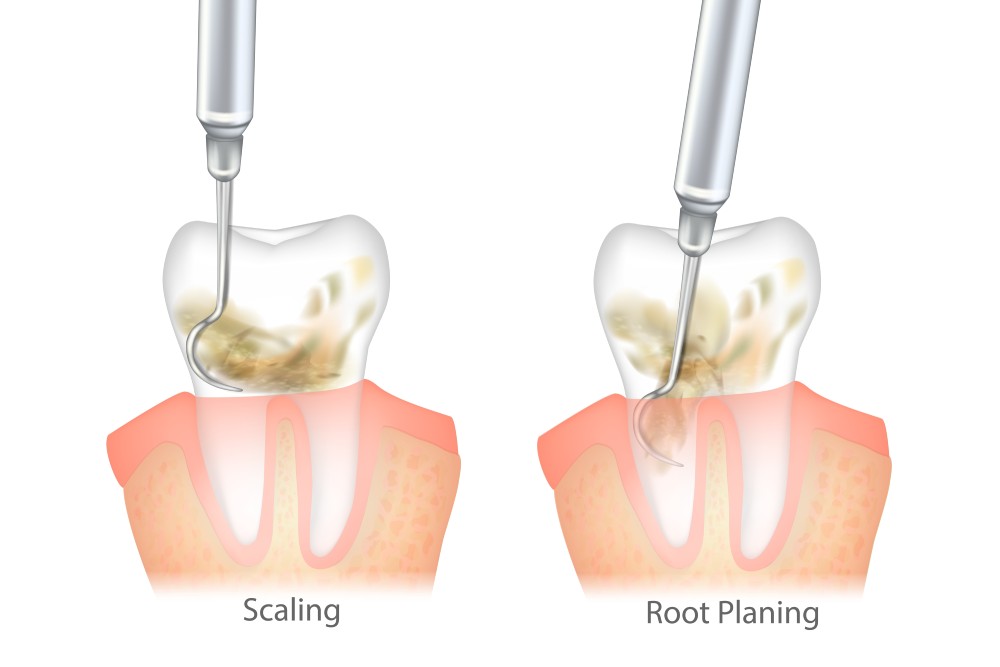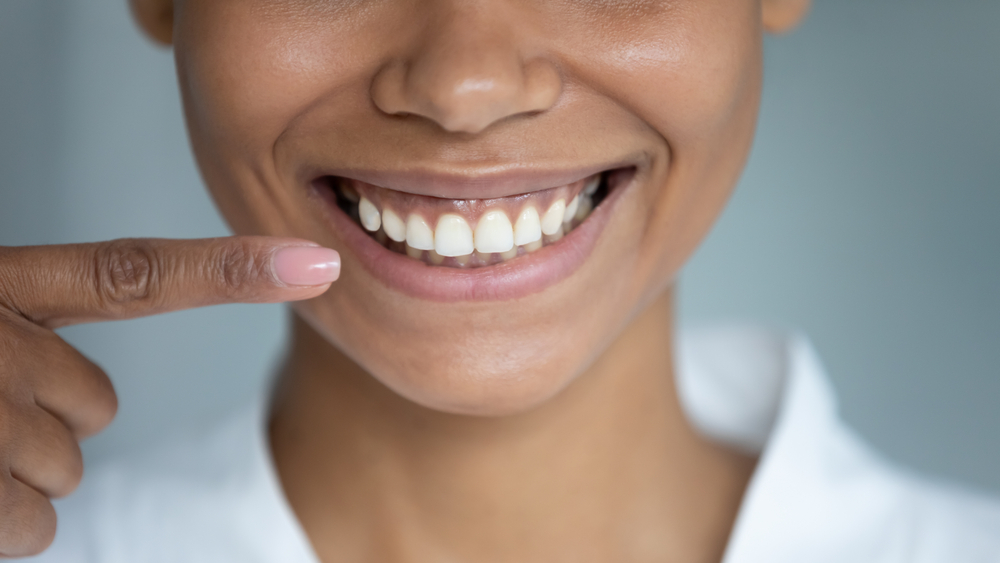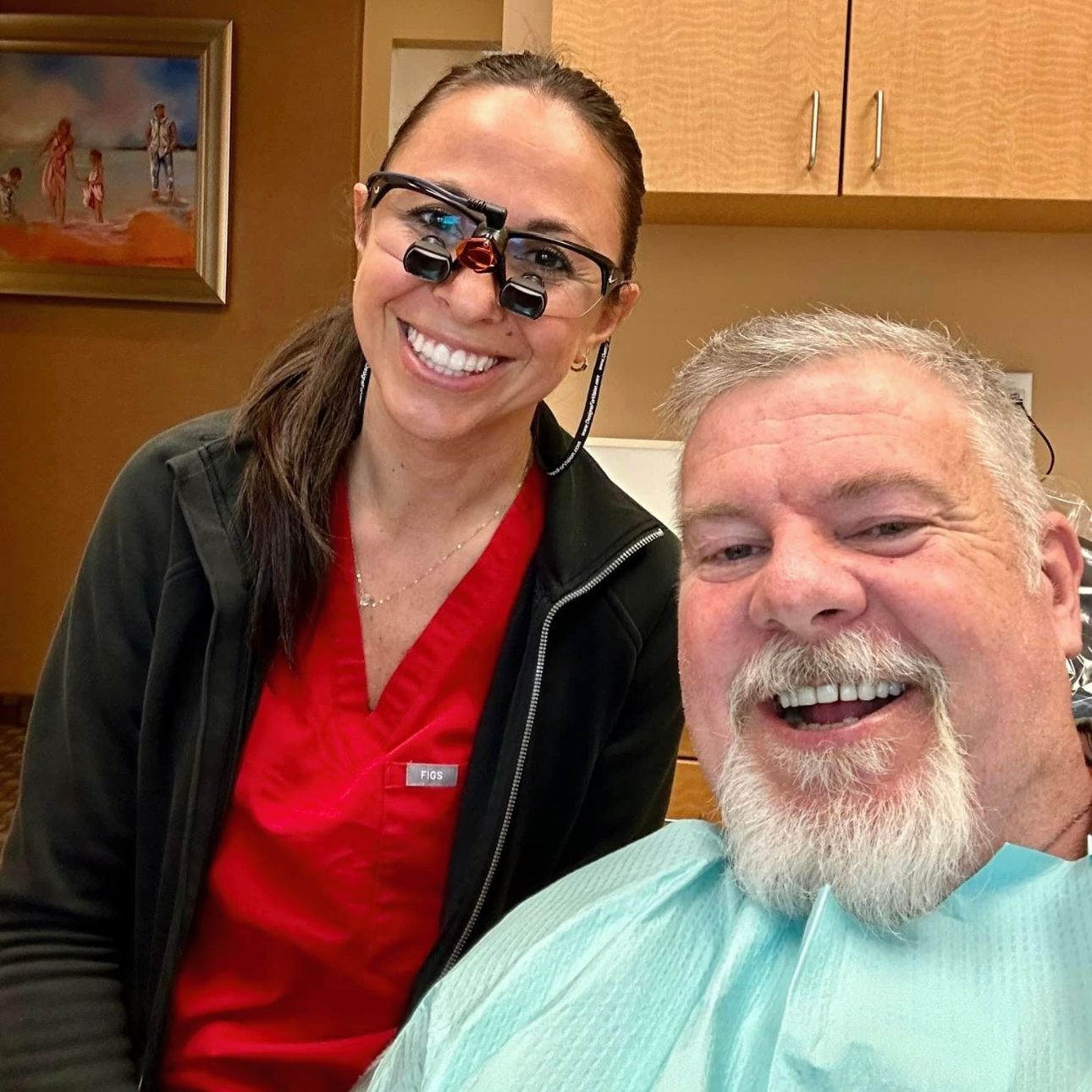Gingivitis
Gingivitis is the earliest stage of gum disease, when plaque and tartar on the teeth can irritate gums. Only a dental professional can remove plaque that has hardened into tartar.

Periodontal Cleaning
Our dental hygienists are trained periodontal therapists. If you present with very mild gingivitis symptoms such as irritated gums or minor plaque or calculus buildup, our periodontal hygiene therapists will perform a thorough cleaning, removing plaque and calculus from the tooth surface where it can be easily reached. You’ll have a complete periodontal examination by Dr. Aldredge.

Ultrasonic Tooth Scaling
Ultrasonic scaling uses high frequency sound waves and a jet of water to reach and remove plaque and calculus that has collected on the tooth surface in the pocket. The tiny scaler tip reaches below the gum line and into the pocket where it vibrates at speeds from 25,000 to 40,000 to blast away debris. The ultrasonic scaler is effective in treating minor to medium depth periodontal pockets. Our patients find it to be more comfortable than manual scaling. It’s also faster and more efficient, which means a shorter appointment.
Measuring Periodontal Pocket Depth

Your gums should fit snugly around your teeth the way a turtleneck fits around your neck. When a turtleneck stretches, it leaves a gap. In dentistry, that gap is called a pocket.
Using a very thin instrument called a periodontal probe, our therapists measure the depth of any pockets where gums are beginning to pull away from teeth. They gently insert the probe between the gums and tooth surface, and chart how far down the pocket goes. A healthy mouth may have a depth of 1-3 mm. A depth of 4 mm or more will require ultrasonic scaling.
Periodontitis
More severe than gingivits, periodontitis means pockets between 5 – 9 mm deep where the bone and gum tissue is breaking down. Treatment ranges from reducing the pockets to gum and bone grafts.
Gum Pocket Treatment

Root Planing
As with gingivitis, mild to moderate periodontitis is treated by cleaning debris out of the gingival pocket to stop gums from pulling away. These pockets, however, are much deeper and impact the roots.
Root planing is a non-surgical procedure that stops the spread of disease and enables gums that have receded to reattach to the tooth. It does not require incisions or stitches. Root planing is performed with an ultrasonic scaler and technique similar to tooth scaling. The difference is the ultrasonic tip reaches well under the gum line all the way to the root.
Root planing smoothes the root surface, removing any material that impedes the reattachment of gum tissue. This includes any surface area that has been contaminated by bacteria. A smooth, infection-free root surface will help gums reattach and once again provide a secure support for the tooth.
Root planing may be performed over two appointments depending upon how many teeth are affected.

LANAP® Laser Gum Treatment
In other cases it may be necessary to encourage the reattachment of the gum to the tooth. LANAP laser surgery is one of the advanced techniques Dr. Aldredge uses for this task. Depending on the progression of the disease, periodontitis may be treated with gum tissue grafts and bone grafts.
The LANAP procedure is a patented laser treatment that reduces periodontal pockets by helping gums and bone tissue reattach to the tooth without surgery. LANAP stands for Laser Assisted New Attachment Procedure. The LANAP treatment is minimally invasive and heals faster than traditional surgery.
The LANAP laser uses a focused beam of light to clear bacteria and debris from the tooth and remove any diseased parts of the gums without affecting healthy tissue. The clean environment encourage natural reattachment of gums and bone to the tooth.

Gum Flap Surgery/Osseous Surgery
In some cases of periodontitis, the periodontal pocket with its destructive plaque, calculus and bacteria is too deep to treat without surgery. Gum flap surgery, also called osseous surgery, is necessary to save the teeth.
What to Expect
During osseous surgery, Dr. Aldredge makes an incision in the gums to allow access to the tooth root, and cleans away bacteria along with any plaque or calculus buildup. Following that, he smoothes and contours any damaged bone around the tooth, eliminating surface irregularities where bacteria might hide and providing a better environment for the gums to attach. The gum is securely closed over what was once the pocket and sutured in place to heal. You will be prescribed antibiotics to protect against re-infection during healing.
Osseous surgery has a high success rate in eliminating periodontal pockets. To prevent pockets or other periodontal challenges in the future, we encourage excellent home oral hygiene habits plus a dental cleaning and periodontal checkup with us every 6 months.
Regrowing Lost Gum and Bone
Treatment of advanced periodontitis depends on how far the disease has progressed. Severe disease necessitates the regeneration and reattachment of bone and tissue that have been destroyed by infection. Common procedures to restore tooth support are gum tissue grafting and bone grafting.

Gum Grafting
Also called gingival grafting, gum grafting may be used to treat thinning or otherwise damaged gums, and to cover and protect exposed roots. Gum grafting encourages healthy tissue growth, restores a barrier against bacteria, and lessens painful tooth sensitivity. The type of gum grafting used depends on the amount of bone and gum tissue involved in each individual case.
Free gingival graft – A free gingival graft is intended to repair structural irregularities such as thinning gums. A small piece of surface gum tissue is taken from the roof of the mouth to a prepared site on the gum surface and sutured in place. The gum graft will integrate with the surrounding gums as it heals. The healthy tissue will help thicken them and encourage the growth of new tissue.
Free gingival grafting is not meant to treat active gum recession but, by strengthening the gums, can stop it from progressing further.
Connective tissue graft – The most common gum graft, the connective tissue graft (subepithelial graft) is used primarily to treat gum recession. Connective tissue is located beneath the gum surface and is composed primarily of collagen and gingival fibers. To place the graft, Dr. Aldredge will first prep the area around the tooth by create a small pouch between the gums and the connective tissue. The graft is taken from the roof of the mouth (the palate) and tucked into the area, covering the exposed tooth roots. Dr. Aldredge then sutures the gum back over the pouch and the site is allowed to heal. As the donor tissue integrates, cells rapidly proliferate to encourage new growth.

Bone Grafting for Individual Teeth
In cases where periodontal disease is so severe that it has not only damaged gums and created deep periodontal pockets but has also destroyed surrounding bone tissue, a bone graft may be necessary.
The need for grafting is determined through imaging and a visual inspection during gum flap or osseous surgery. As Dr. Aldredge accesses and cleans debris from around the tooth root, he will examine and assess the quality of the surrounding bone. If he feels the bone has deteriorated to the point where it cannot support the tooth, he will perform a bone graft.
With the gum already moved away from the tooth root for flap surgery, Dr. Aldredge will remove damaged bone, smooth the surface of the remaining bone, and insert bone graft material. The gum flap is sutured closed over the pocket. Over the course of months, the graft fuses with the existing bone and helps generate new bone growth. The result is a restored strength to the jaw and support for the tooth.



